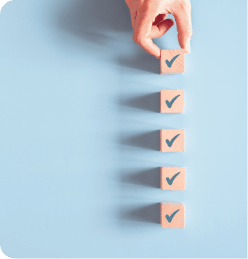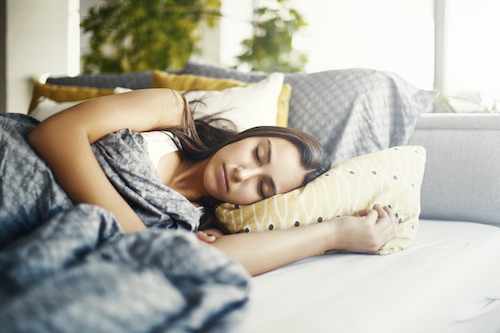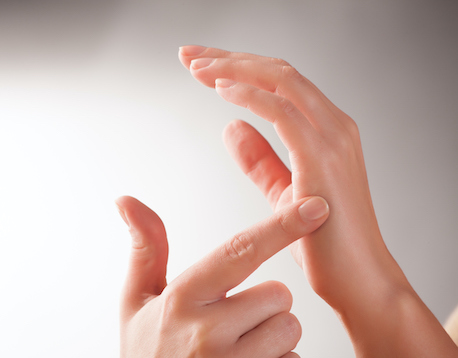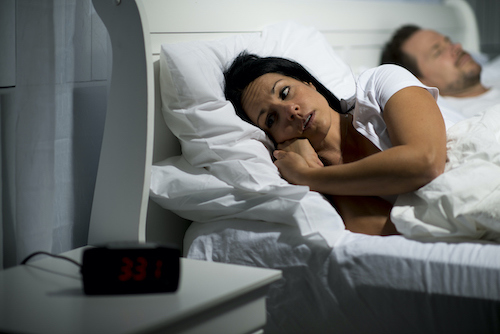Authored by Dr. Sharon Stills, NMD
Tossing, turning, getting up and pacing in the neon glow of your alarm clock — sound familiar? If falling asleep has become a nightmare for you, you’ve come to the right place.
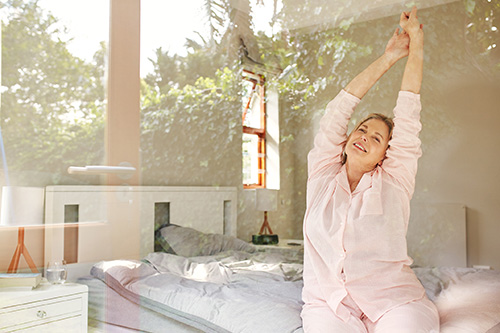
At Women’s Health Network we understand that falling asleep is actually a complex physiological process that involves intricate coordination between your brain and body. We stay up too late, working longer and longer hours, endlessly checking our electronic gadgets. This means that the brain and body often receive mixed signals about sleep and the crucially important wind-down process that precedes it. You end up losing sleep or even suffering from insomnia. Over-the-counter sleep aids and prescriptions may drug you to sleep, but leave you groggy and unfocused in the morning, perhaps questioning if you’ve even slept at all.
In order to sleep well and wake up feeling restored, the sleep process should be examined on three levels: environment, mind and body.
Step 1: Prepare your bedroom
When you are making a plan for better sleep, start in the bedroom. Use these tips to create a comfortable sleep environment, also known as practicing good “sleep hygiene”:
- Keep your room as clutter-free as possible. As a naturopathic doctor, I tell my patients, in regards to your bedroom and bed, “The bigger the better — give yourself room to stretch literally and figuratively.”
- Remove all electronics — yes, even your smart phone!
- Keep the temperature cool (about 65 degrees).
- Use shades that block out as much light as possible.
- Experiment with a white noise machine or try ear plugs if your room/neighborhood isn’t quiet.
Step 2: Calm your mind
We get it. ‘Calm your mind’ sounds like a cliché these days and you might wonder if anyone can really do that. While it’s true that there’s no single quick fix, following these steps can have a cumulative effect on relaxing your mind. That can really make a difference, especially if you turn these suggestions into regular patterns. Try these:
Dr. Andrew Weil’s 4-7-8 Relaxing Breathing Exercise
- Exhale completely, making a “whoosh” sound through your open mouth.
- Inhale through your nose to a count of 4.
- Hold the breath for a count of 7.
- Release the breath with a “whoosh” from your mouth to a count of 8, exhaling the stress in your body.
- Repeat the above steps 10 times.
- The best hours for sleep are between 10:00 pm and 6:00 am. Try turning off all electronics between 8:00 pm and 9:00 pm. Televisions, phones and computers trigger the brain to release hormones that make you alert. So give yourself 1-2 hours away from this kind of stimulation before attempting sleep.
- Experiment with aromatherapy by filling a lavender sachet and putting it under your pillow or adding a few drops of lavender or Roman chamomile essential oil to a hot bath before bedtime.
- Practice deep breathing. Our own Dr. Sarika Arora has her patients do ten rounds of Dr. Andrew Weil’s “4-7-8 Breathing Exercise.” See box for details.
- Gaze at a lit candle or meditate for 3-5 minutes before bed.
- Make positive sleep affirmations and set your sleep intention. Some examples include: “I will sleep soundly and peacefully tonight.” “I will get all the rest my body needs.” “I will fall asleep and stay asleep with no trouble.” “I’m doing all that I can to sleep well and my efforts will pay off tonight.”
- Try engaging in sexual play. You can do this alone or with a partner. Here’s a little nudge that always interests my patients: orgasms produce an oxytocin rush that also releases endorphins and helps induce sleep.
Step 3: reset your body
This third step involves resetting your body’s natural sleep cycle. Bright artificial lighting, reduced time outdoors, continual exposure to electronics and increased work hours can easily cause your circadian rhythm to shift out of sync. This disturbs the 24-hour cycle that dictates sleep, wakefulness and other physiological processes. While it’s not your fault, you can do something about it!
These sleep aids can help physiologically reset your body’s sleep cycle naturally:
- Melatonin. This hormone is naturally produced in the brain when we are exposed to a period of dim lighting or darkness. Melatonin makes us less alert and more ready for sleep, but as we get older (after 40) our bodies make less of it. Supplementing with melatonin brings better, more dependable sleep to people with insomnia and jet lag, and nightshift workers
- Calcium and magnesium. Research shows that low magnesium is associated with increased anxiety and disrupted sleep. Recently, experts also found that the ratio of calcium to magnesium is important for lowering anxiety and stress, confirming that these two minerals are essential for your sleep rescue kit.
- Phosphatidylserine. This molecule is found naturally in the membranes of nerve and brain cells and can also be taken as a supplement to help calm the “fight or flight” response that can prevent restful sleep.
- Sleep-supportive herbs. Passionflower is our favorite choice for sleep-supportive herbs because scientists believe it naturally and safely increases the availability of a relaxing chemical made in the brain known as GABA (gamma-aminobutyric acid). You might also experiment with kava kava, valerian and chamomile.
Women’s Health Network has many options for better sleep. Our phytotherapeutic calming formulation, Serinisol, has passionflower, calcium, magnesium and phosphatidylserine to help lower stress and naturally prepare your body for sleep, without the next-day “hangover” associated with pharmaceutical sleep aids.
Getting up in the night? Tips for falling back to sleep
It’s actually quite normal for humans to wake up mid-sleep. Prior to the use of artificial light, people went to bed after sundown, slept for 3-4 hours, woke for an hour or two, and then went back to sleep for 3-4 hours until sunrise. In fact, a 1992 study shows that is the rhythm our bodies will naturally fall into if we don’t use artificial light. The trick is being able to fall back to sleep again.
Stay calm and get back to sleep with these tips:
- Leave the lights off and try not to look at the clock.
- Go to the bathroom if you need to, then get right back into bed to return to sleep.
- If you can’t fall back to sleep within 15 minutes — I recommend that you do not get out of bed or turn on the light and read because it’s too stimulating. Stay in bed and snuggle into the blankets and pillows. Begin to breathe deeply and slowly, gradually relax the muscles throughout your body one area at a time. You might even use this found time to meditate and calm your mind. You’ll still be resting and may fall back to sleep more quickly than you imagined.
- If you start worrying or planning, write down your thoughts and resolve to think about it in the morning. You might also try the “4-7-8 breathing exercise” above to help clear your mind.
Ready? Set? Sleep….
You can find more help for getting to sleep, staying asleep and waking up restored with our guided at-home approach to solving sleep troubles. Give us a call — we’ll get you back to sleep quickly and naturally!
For more information on natural sleep supplements, see our article Natural solutions for insomnia.
Wehr, T, et al. 1992. In short photoperiods, human sleep is biphasic. Journal of Sleep Research, 2 (103-7). URL
Weil, Andrew. 2013. Breathing: Three Exercises. URL: https://www.drweil.com/drw/u/ART00521/three-breathing-exercises.html.
Appel, K., et al. 2010. Modulation of the γ-aminobutyric acid (GABA) system by Passiflora incarnata L. Phytother. Res. [Epub ahead of print]. URL (abstract): https://www.ncbi.nlm.nih.gov/pubmed/21089181 .
Elsas, S., et al. 2010. Passiflora incarnata L. (Passionflower) extracts elicit GABA currents in hippocampal neurons in vitro, and show anxiogenic and anticonvulsant effects in vivo, varying with extraction method. Phytomedicine, 17 (12), 940–949. URL (abstract): https://www.ncbi.nlm.nih.gov/pubmed/20382514 .
Jung, K., et al. 2010. Associations of serum Ca and Mg levels with mental health in adult women without psychiatric disorders. Biol. Trace Elem. Res., 133 (2), 153–161. URL (abstract): https://www.ncbi.nlm.nih.gov/pubmed/19543697.







